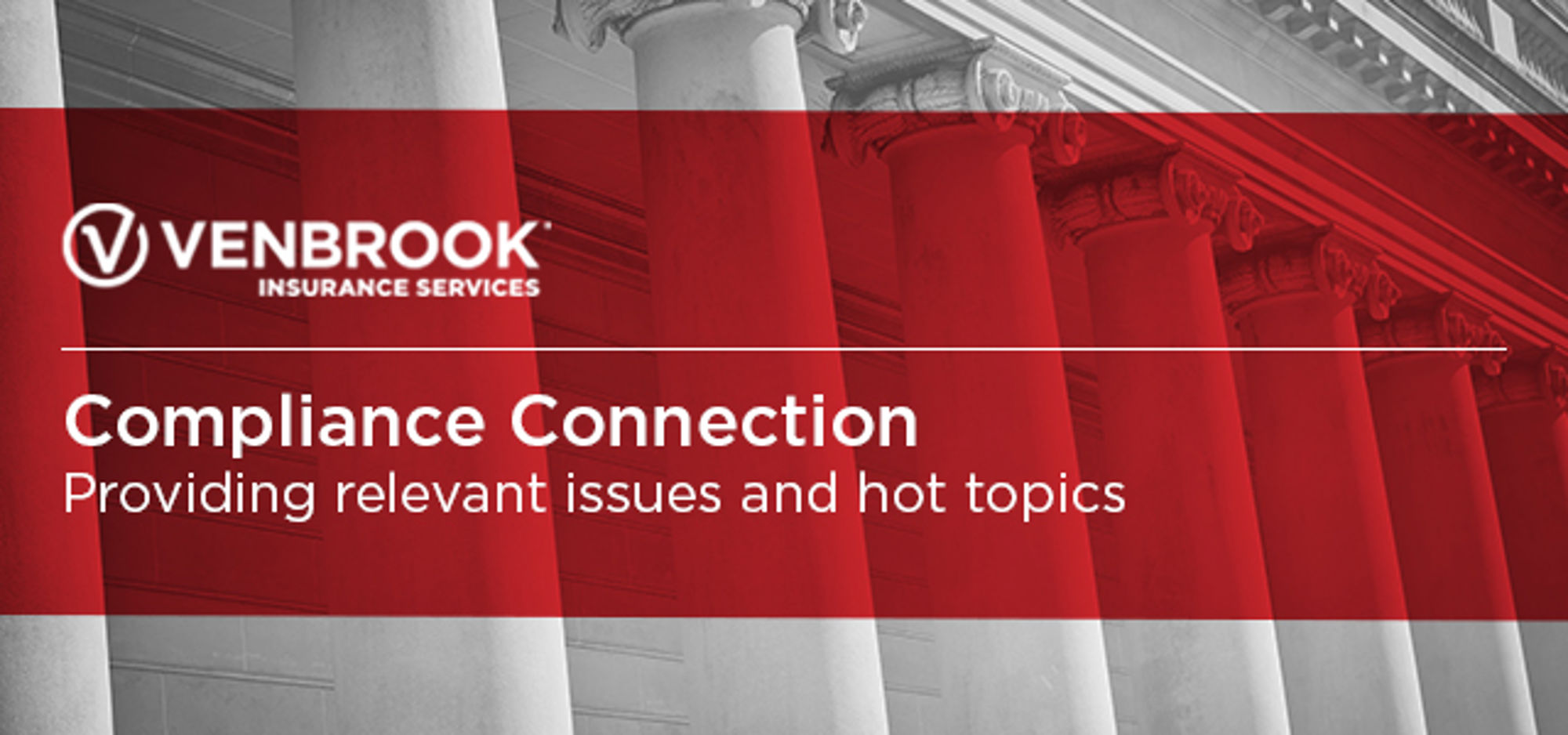On November 4, 2021, the U.S. Occupational Safety and Health Administration (OSHA) published its long-awaited emergency temporary standard requiring employers with 100 or more employees to either ensure the members of their workforce are vaccinated against COVID-19 or are tested for the virus at least once a week and wear face coverings. The Biden Administration also published different vaccination requirements for federal contractors and medical facilities that receive federal funding.
The new requirement for private businesses will go into effect on November 5, 2021. By December 4, 2021, employers must have their vaccination and testing policies written out and communicated to employees. Employees must demonstrate vaccination or submit to weekly testing and mask-wearing by January 4, 2022. The Biden Administration estimates the emergency measure will impact up to 84 million American workers.
How do employers count to 100 employees?
Employers must include all their employees located in all U.S. locations as of November 5, 2021. Part-time, hourly, and seasonal employees who are working on that date count in the total. It does not matter if employees are vaccinated or not. They may work at home, or outside, or other locations, or have a reasonable accommodation against getting a vaccine. Every W-2 employee counts. If an employer has 100 or more employees on November 5 and later dips under 100 employees, the rule still applies to the business. If a company gains employees and goes over 100, then the rule applies when the workforce increases.
Do companies with joint ownership, franchises, staffing firms, etc., count their employees together or separately?
Jointly owned companies count their employees together if they utilize common worksite safety policies and enforcement. Individual franchise owners count their employees separately, and the franchisor counts “home office” employees together. Staffing firms count all their employees, including those they place in separate locations, together. Employers that utilize staffing firms do not include the staffing firm employees in their count. However, employers that are required to comply with this rule based on their direct employee count can mandate their staffing firms to have their employees comply.
Do all employees have to follow these rules?
Businesses with 100 or more employees need to follow these rules or implement a stricter mandatory vaccination policy. However, of their employees, three types of employees have an exception to the rule. If any of the following conditions are true, then the employee does not need to comply personally:
- The employee does not ever report to a workplace where other individuals are present;
- The employee is working from home (the exemption only applies while the person is working from home); or
- The employee works exclusively outdoors.
All other employees must either submit proof of vaccination or show proof of COVID-19 testing every seven days and wear a face covering at work. A “face covering” is defined as consisting of two or more layers of fabric, secured to the head with straps or ties, covering the nose and mouth, and solid with no slits or holes.
How do employers document compliance?
Employers need to develop a written mandatory vaccination policy or vaccination and testing policy by December 4, 2021. The written vaccination policy needs to include many specific data elements, but OSHA provides employers with a compliant template to use.
Businesses also need to determine the vaccination status of each employee, obtain acceptable proof of vaccination from vaccinated employees, maintain records of each employee’s vaccination status, and maintain a roster of each employee’s vaccination status. In addition, employers must record each COVID-19 test result provided by each employee and keep the results of tests they have conducted. The employer must treat all this information as confidential employee medical information and store it securely and separately from other employee personnel records.
Do employers have to follow these rules exactly?
The standards outlined in the emergency standard are a floor, not a ceiling. What this means is that employers may adopt stricter vaccination, testing, or masking requirements for their employees. Affected businesses may also adopt more generous policies about giving people paid leave, paying for testing and face coverings, and granting additional sick leave for COVID cases and quarantines. Affected employers will not remain in compliance with the law if they apply lesser requirements than those the emergency standard requires.
What happens to employers that do not follow the new requirements?
OSHA can cite and financially penalize employers for general non-compliance with all or specific aspects of this policy or cite employers for violations in particular instances. OSHA can also require employers to take compliance abatement measures. OSHA will determine whether an employer has intentionally disregarded its obligations or exhibited a plain indifference to employee safety or health, both of which will result in stricter penalties. The penalty for an OSHA violation is $13,653 per violation; however, we will note that the penalty for a willful or repeated violation is $136,532 per violation.
What happens to employees who do not follow the new requirements?
Suppose an employee refuses to comply with workforce vaccination and testing policies. In that case, employers may take disciplinary action, keeping in mind and in compliance with other federal and state employment laws and protections. If an employee lies about vaccination status or falsifies vaccination records, this is a federal criminal offense.
Is this a permanent requirement?
It is a temporary standard which, as of now, will last for six months. The Biden Administration could elect to make this standard, or a revised version of it, permanent before May 4, 2022. If they do not, then this emergency standard will expire on May 4, 2022. OSHA is currently seeking public comment on the standard, including about making it permanent.
What about conflicting state requirements?
The new federal OSHA standard supersedes any State or local requirements that ban or limit an employer's authority to require vaccination, face covering, or testing. OSHA's authority to preempt such State and local requirements stems from Section 18 of the OSH Act and general conflict preemption principles. As the Supreme Court has explained, once OSHA implements federal standards addressing an occupational safety and health issue, States may no longer regulate that issue except with OSHA's approval. If an employer subject to this rule is concerned about a contradictory state or local-level requirement, they may want to consider mandating weekly testing and face coverings.
What happens in States that implement their own workplace safety rules separate from OSHA (OSHA State Plan jurisdictions)?
The regulation applies to both states where OSHA handles all workplace safety rules and the states with OSHA-approved state-administered programs (OSHA State Plan jurisdictions). State plan jurisdictions have 30 days to adopt either the requirements in this emergency standard or stricter requirements. These states need to notify OSHA of their implementation plans within 15 days.
How do employers and employees document vaccinations?
Each employer must require each vaccinated employee to provide acceptable proof of vaccination status, including whether they are fully or partially vaccinated. The items in the following list constitute acceptable documentation for proof of vaccination:
- The record of immunization from a health care provider or pharmacy;
- A copy of the U.S. COVID-19 Vaccination Record Card;
- A copy of medical records documenting the vaccination;
- A copy of immunization records from a public health, state, or tribal immunization information system; or
- A copy of any other official documentation that contains the type of vaccine administered, date(s) of administration, and the name of the health care professional(s) or clinic site(s) administering the vaccine(s).
If an employee cannot produce acceptable proof of vaccination as listed above, a signed and dated statement by the employee will be sufficient. The employee's report must:
- Attest to their vaccination status (fully vaccinated or partially vaccinated);
- Attest that they have lost or are otherwise unable to produce proof required by this section; and
- Include the following language: “I declare (or certify, verify, or state) that this statement about my vaccination status is true and accurate. I understand that knowingly providing false information regarding my vaccination status on this form may subject me to criminal penalties.”
Who pays for the vaccinations?
COVID-19 vaccinations (including booster shots) must be covered by private health insurance policies’ public health coverage programs in the United States. There are other federal mechanisms to provide uninsured individuals with cost-free access to COVID-19 vaccinations.
Do employers have to give employees time off to get a COVID-19 shot?
Employers subject to this standard must provide up to four hours of paid time off, at the employee's regular pay rate, for vaccination. For this rule's purpose, the paid leave applies to initial vaccination doses, not booster shots. Any other leave that the employee has accrued, such as sick or vacation leave, cannot offset the four hours of paid time that the employee is entitled to for purposes of receiving a vaccination.
Employers may require employees who have accrued paid sick leave to use that leave when recovering from vaccination side effects. Likewise, employers who do not specify between different types of leave (i.e., employees get one kind of leave) may require employees to use that leave when recovering from vaccination side effects. When an employer provides employees with multiple types of leave, such as sick leave and vacation leave, the employer can only require employees to use their sick leave when recovering from vaccination side effects. However, an employer cannot require an employee to go into the negative for paid sick leave if they do not have accrued paid sick leave when they need to recover from side effects experienced following a primary vaccination dose.
Employers do not have to give retroactive leave to employees who are already vaccinated.
Does this regulation force employees to get vaccinated or quit their jobs?
No. Employers may adopt stricter mandatory workplace vaccination policies if they want to do so (while complying with other federal laws about reasonable accommodations). Still, this regulation does not require any employee to get a vaccination. If an employer is following the terms of this standard, then affected employees either need to provide proof of immunization by January 4, 2022 or undergo COVID-19 testing every seven days and wear an acceptable face covering at work.
If an employer opts to require weekly employee masking and testing, who pays for the tests? What about the face coverings?
Generally speaking, employers do not need to pay for any costs associated with testing; employees who choose to be regularly tested and wear a face covering in lieu of vaccination will need to bear the corresponding costs. However, employer payment for testing may be required by other laws, regulations, or collective bargaining agreements, or other collectively negotiated agreements. Of course, employers may also choose to provide tests and pay for all or part of the testing costs.
This standard does not require employers to provide free face coverings or pay for employees' face coverings. As with testing, employers may provide appropriate masks or reimburse for their costs if they choose to do so.
Do employees who are not vaccinated need to wear masks all the time?
No. The rules specify that each employee who is not fully vaccinated wears a face covering when indoors and when occupying a vehicle with another person for work purposes, except:
- When an employee is alone in a room with floor to ceiling walls and a closed door.
- For a limited time while the employee is eating or drinking at the workplace or for identification purposes in compliance with safety and security requirements.
- When an employee is wearing a respirator or facemask.
- Where the employer can show that the use of face coverings is infeasible or creates a greater hazard that would excuse compliance with this paragraph (e.g., when it is important to see the employee's mouth for reasons related to their job duties, when the work requires the use of the employee's uncovered mouth, or when the use of a face covering presents a risk of serious injury or death to the employee).
What notification do employers need to give to employees about the new requirement?
The employer must give each employee, in a language and at a literacy level the employee understands:
- The requirements of the new standard and the company’s specific policies and procedures adopted to implement the federal requirements.
- The CDC document “Key Things to Know About COVID-19 Vaccines”
- Information about protection against retaliation and discrimination.
- Information about the criminal penalties for knowingly supplying false statements or documentation.
Employers may choose any method of informing employees so long as each employee receives the information specified in the standard in a language and at a literacy level they understand. For example, an employer may provide this information to employees through email communications, printed fact sheets, or in discussion at a regularly scheduled team meeting.
Do employers need to provide any information to the federal government to comply with this standard?
Employers need to report work-related COVID-19 fatalities to OSHA within eight hours of learning about them and work-related COVID-19 in-patient hospitalizations within 24 hours of the employer learning about the hospitalization.
While employers do not need to submit their written vaccination and testing plans or their employee vaccination status and employee testing result records to OSHA routinely, they may be requested to do so by federal regulators. Employers must provide their documentation to OSHA for examination and copying within four business hours of a request!
What happens if an employee gets COVID-19?
An employer must immediately have any employee who receives a positive COVID-19 test or is diagnosed with COVID-19 vacate the workplace. Employers must keep the employee removed until the employee:
- Receives a negative result on a COVID-19 nucleic acid amplification test (NAAT) following a positive result on a COVID-19 antigen test if the employee chooses to seek a NAAT test for confirmatory testing;
- Meets the return-to-work criteria in CDC’s “Isolation Guidance”; or
- Receives a recommendation to return to work from a licensed healthcare provider.
COVID-19 positive employees may continue to work from home.
What resources are available to help employers with compliance?
Along with the emergency standard, OSHA published many resources about the requirement for employers and employees. They are all available at www.osha.gov/coronavirus.
Public policy concerning COVID-19 is constantly evolving. As more information about this emergency standard and other requirements becomes available, MZQ will keep our clients informed!
























